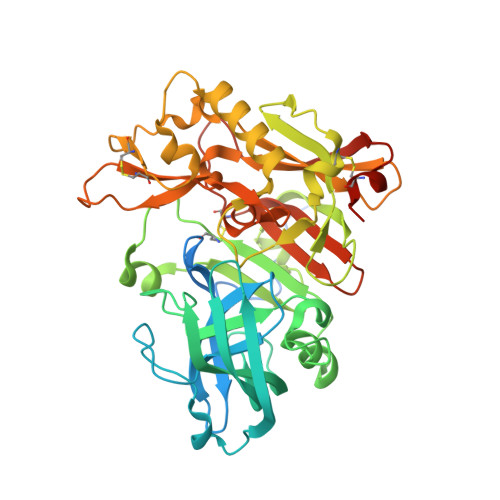Optimization of Hydroxyethylamine Transition State Isosteres as Aspartic Protease Inhibitors by Exploiting Conformational Preferences.
Bueno, A.B., Agejas, J., Broughton, H., Dally, R., Durham, T.B., Espinosa, J.F., Gonzalez, R., Hahn, P.J., Marcos, A., Rodriguez, R., Sanz, G., Soriano, J.F., Timm, D., Vidal, P., Yang, H.C., McCarthy, J.R.(2017) J Med Chem 60: 9807-9820
- PubMed: 29088532
- DOI: https://doi.org/10.1021/acs.jmedchem.7b01304
- Primary Citation of Related Structures:
6BFD, 6BFE, 6BFW, 6BFX - PubMed Abstract:
NMR conformational analysis of a hydroxyethylamine peptide isostere developed as an aspartic protease inhibitor shows that it is a flexible architecture. Cyclization to form pyrrolidines, piperidines, or morpholines results in a preorganization of the whole system in solution. The resulting conformation is similar to the conformation of the inhibitor in the active site of BACE-1. This entropic gain results in increased affinity for the enzyme when compared with the acyclic system. For morpholines 27 and 29, the combination of steric and electronic factors is exploited to orient substituents toward S1, S1', and S2' pockets both in the solution and in the bound states. These highly preorganized molecules proved to be the most potent compounds of the series. Additionally, the morpholines, unlike the pyrrolidine and piperidine analogues, have been found to be brain penetrant BACE-1 inhibitors.
- Lilly SA , Avenida de la Industria 30, 28108 Alcobendas, Madrid, Spain.
Organizational Affiliation:


















